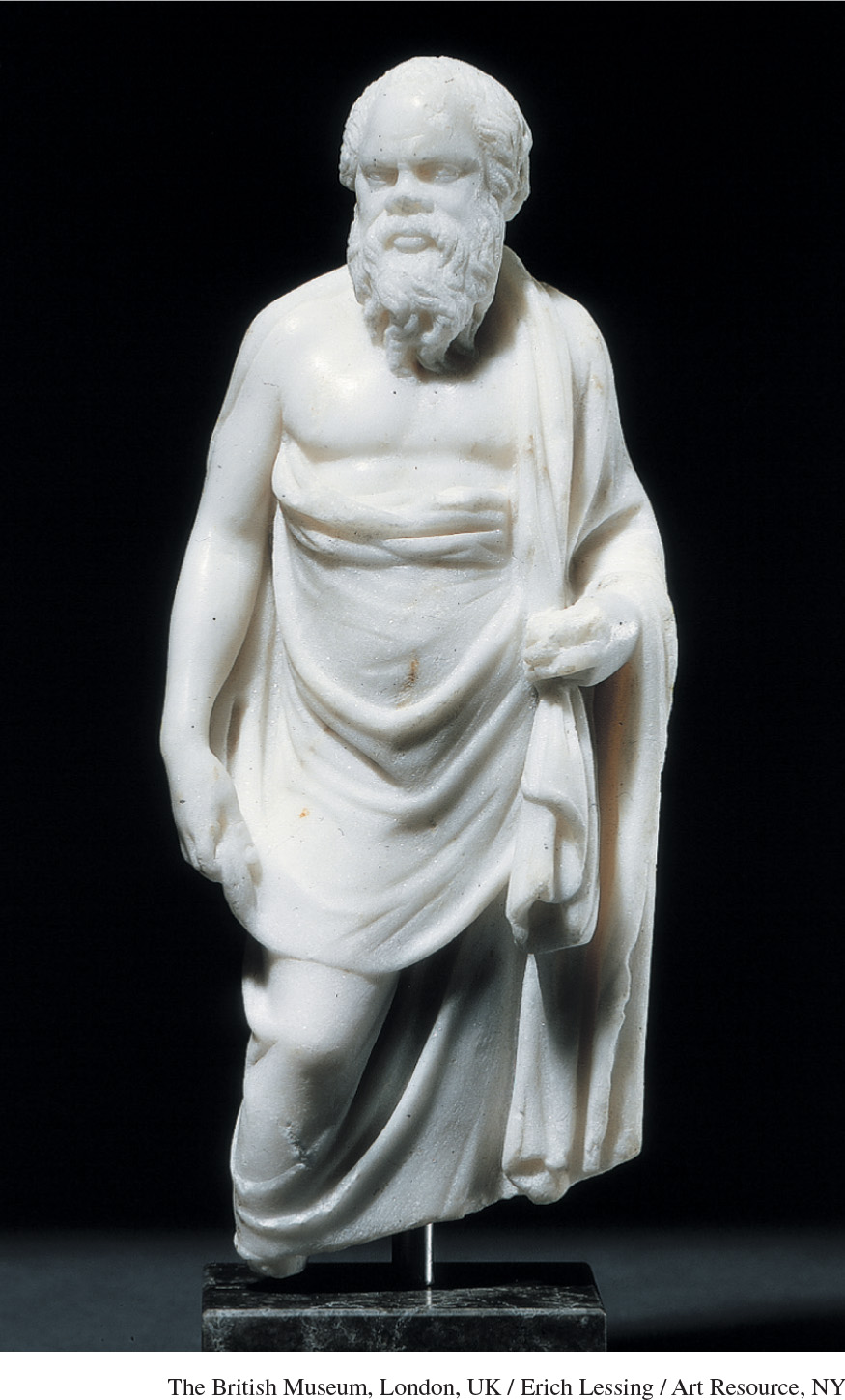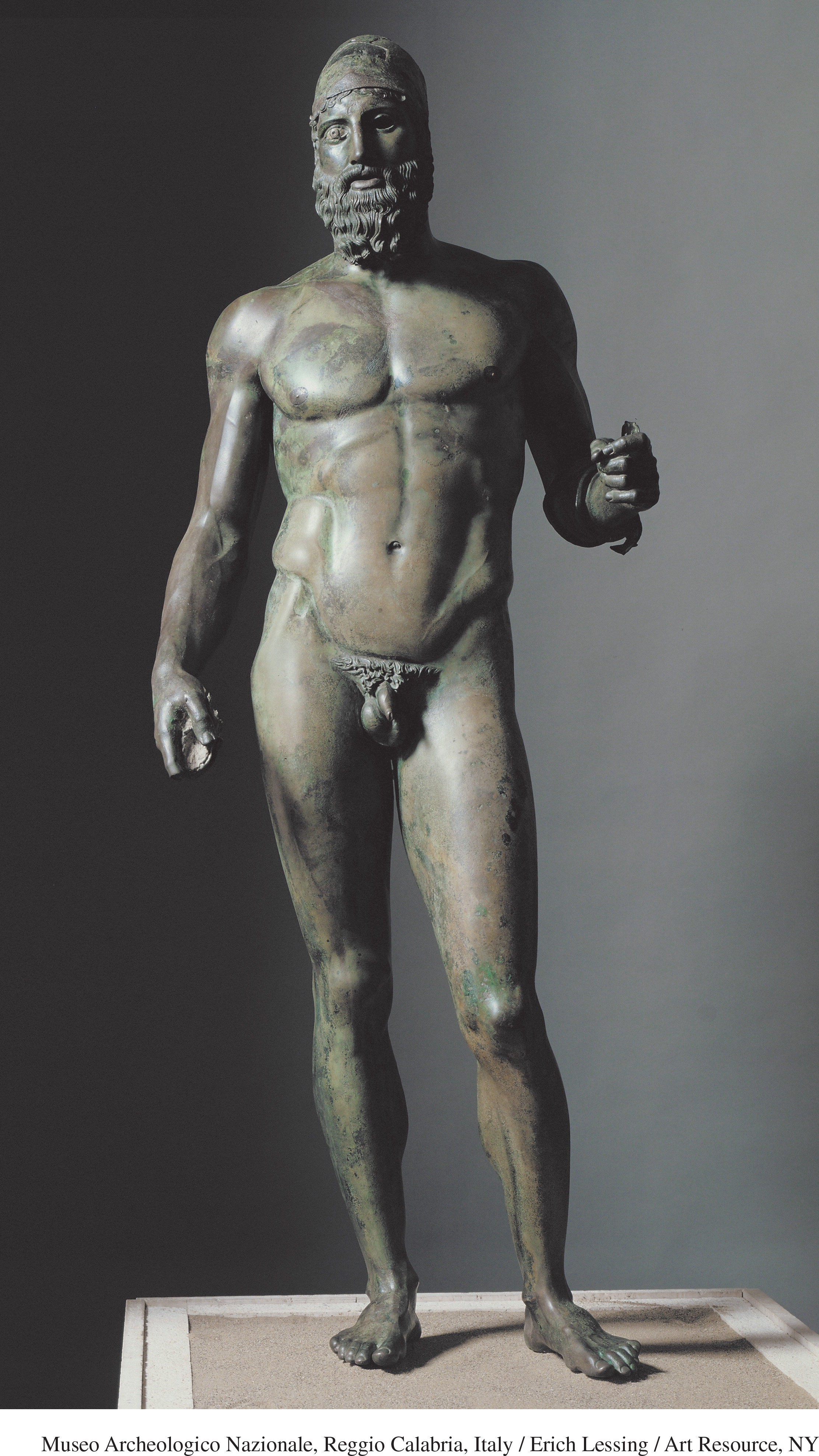Seeing History: How to Look Like a Man in Ancient Greece


Ancient Greeks placed great value on physical beauty for both genders. Keeping the body in good condition, well groomed, and well dressed was thought to be the duty of women and men alike, and “looking good” counted as evidence that one’s mind, spirit, and morals were also in excellent, praiseworthy condition. For men, the ideal of individual beauty was also connected to the expectation that they would compete in sports and serve in the citizen army of their city-state. Wealthy residents of Greek cities supplemented public expenditures in providing exercise facilities (gymnasia) that men—or at least those men who did not have to do manual labor from dawn to dusk to support their families—were expected to use on a daily basis to stay in shape. What today might be called track and field made up the majority of the exercises that most men did as their workouts, but weight training, boxing, and wrestling were also common. Ball games were especially popular. Serious athletes would hire specialists and trainers to help them improve their bodies and their skills.
The metal statue shown here displays the ideal for mature males in ancient Greek society of the Golden Age—a body that is well proportioned, strongly muscular, and relaxed, a bearded face that expresses calm self-control and alert self-confidence, and genitals that are not overly prominent. That the statue is not wearing shoes is an artistic convention of such statues, to make them look like traditional pictures of heroes from legend. This figure could have represented an athlete or perhaps a hoplite (the head wears a cloth cap of the kind that infantry warriors put under their metal helmets to cushion them). Forensic analysis of skeletal remains from the period show that the average man was probably shorter in height and smaller in weight than the average man in the contemporary United States, but the Greeks’ frequent exercise and “Mediterranean diet” probably gave them strength and stamina at least equal to their modern counterparts.
The small marble statue of Socrates presents a drastic contrast to this ideal of masculinity. The famous philosopher is shown just as the ancient literary sources describe him: paunchy, simply dressed, and appearing combative, ready to take on anyone with his aggressive refutations of their cherished but unexamined assumptions about the way to live a life of excellence. If the feet of the statuette were preserved, they would certainly lack shoes, but not because Socrates was being made to look like a conventional hero. In fact, he purposely challenged the conventional notions of how a “real” man was supposed to look and to act. At the same time, however, Socrates went to great lengths to demonstrate that someone like himself could contribute to his community just as significantly as could a conventionally “perfect” male, or perhaps even more significantly, by focusing on developing his mental and ethical strengths and stamina. Socrates, for example, showed that he could serve loyally and effectively in the army; he even became famous for rescuing a much younger man—one who was famous for looking like the metal statue pictured here—when that example of the masculine ideal was in trouble on the battlefield and needed help to escape from the enemy. Moreover, Socrates was renowned for never being bothered by bad weather, by being able to stand still in one place for hours and hours when he was thinking about a problem, and for being able to drink absolutely everyone under the table when wine flowed all night at a symposium. Above all, he prided himself on never doing injustice to another person, not even when that person had wronged him first. In this way, Socrates presented his own appearance and his own way of life as a challenge to the usual ideal of what a man was supposed to be and to do. These characteristics corresponded to Socrates’s announced life mission to question all received ideas and to never cease the quest to understand the true nature of excellence.
Question to Consider
What role do you think “ideals” of gender play in affecting how societies structured themselves in ancient times and in today’s world?